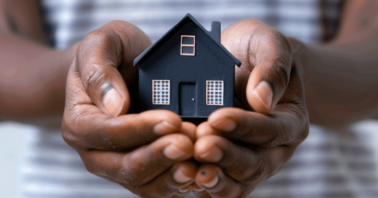- Having an amazing design does not mean compromising on functionality.
- Every space serves a purpose, and identifying that purpose is the first step in any successful design.
- The most memorable spaces reflect the personality and story of their occupants.
Walking into a space should be impactful— it should make you feel happy, warm, comfortable, motivated, relaxed, comfortable and every other amazing feeling there is. That is the kind of power good interior design has!
Having an amazing design does not mean compromising on functionality. Most people have the perception that these two things cannot be achieved together. However, that is untrue. It is very possible to achieve an aesthetically pleasing space while maintaining functionality. Let’s explore how.
Table of Contents
The Power of Purpose
Every space serves a purpose, and identifying that purpose is the first step in any successful design. When you clarify the “why” behind a space, you create a foundation for all your design decisions. Think of purpose as the heartbeat of the room. Once you understand its role, you can start weaving in elements that fulfill that role beautifully.
Practical Tips on How to Combine Form and Function
Choose Furniture That Works for You
Back in the day, stylish furniture was usually not very practical. Fortunately, this is not the case anymore. Today’s market has done a pretty good job in marrying the two and as such, offering countless options. A good example is how furniture nowadays includes storage spaces. You will find a coffee table, a couch or even a bed with an extra compartment which serves as a storage space. This not only creates a minimalistic vibe since things are not all over the place, but also increases storage spaces in a home. Another example of a functional design concept in furniture is convertible furniture. They include convertible sofa beds, foldable dining tables, or modular shelving. As you choose any of these pieces, it’s important to ensure that they all
Focus on Materials
Functionality often comes down to durability, so the materials you choose should not only look great but also withstand daily use. For high-traffic areas, hardwood floors or vinyl planks are excellent options due to their longevity and timeless appeal. Stain-resistant fabrics and easy-to-clean surfaces are invaluable for households with kids or pets, while materials like quartz countertops in kitchens and bathrooms beautifully combine style and resilience.
Master the Art of Lighting
Lighting is one of the most underrated aspects of interior design. However, lighting has the ability to turn around an area entirely. Task lighting-like desk lamps, under-cabinet lights, or pendant lights over counters-is ideal over areas where reading, cooking, or working will occur. Ambient lighting creates a warm and inviting atmosphere, as dimmable options allow you to easily create the mood. It serves to accentuate architectural features, artwork, or decor in addition to adding depth and character. By incorporating these three types of lighting, a space can be visually beautiful and highly functional.
Plan for Practical Layouts
A beautiful room that’s hard to navigate is an interior design failure, and that’s why functionality really shines with layout. Make sure there’s enough space for people to move comfortably, especially in communal areas like the living room or dining room. Arrange furniture with purpose: in a media room, for example, position seating to optimise the viewing angle and acoustics. Don’t over-crowd the space: negative space, or purposefully left-open areas, let your design breathe and keep the room spacious and inviting.
READ ALSO: How to Transform Your Space on a Budget
Personalise with Purpose
The most memorable spaces reflect the personality and story of their occupants. Ensure you incorporate art pieces that resonate with you.Display family photos or heirlooms that make the space uniquely yours. Finally, layer in textiles, such as throw pillows, area rugs, and curtains, to add warmth and character.
Personal touches turn a well-designed room into your dream space.
The Emotional Impact of Thoughtful Design
When style and functionality come together in perfect harmony, a space doesn’t just look good but feels great. It can be a place to live, work, and relax with ease. Think about it: a cozy, yet sophisticated living room, or a home office that heightens your ability to focus while reflecting your personal touch. Thoughtful design touches more than just the visual; it elevates how you live your everyday life.
Why It’s Worth the Investment
The effort you put into creating a balanced design pays dividends in the long run. A functional yet stylish space:
- Supports your daily routines.
- Reduces stress by eliminating frustration and clutter.
- Enhances the value of your home, both emotionally and financially.
READ ALSO: Creative Shelf Ideas that Add Style to Your Home
Conclusion
Designing your dream space is about more than choosing the right colours or the latest trends. It’s about creating an environment where form and function work together to support your lifestyle and elevate your well-being. Whether you’re revamping a single room or starting fresh with a new home, remember this: you don’t have to choose between style and functionality—you can have it all.
So, go ahead. Dream big. Design boldly. Create a space that’s as practical as it is beautiful—a space that feels like home in every sense of the word.



